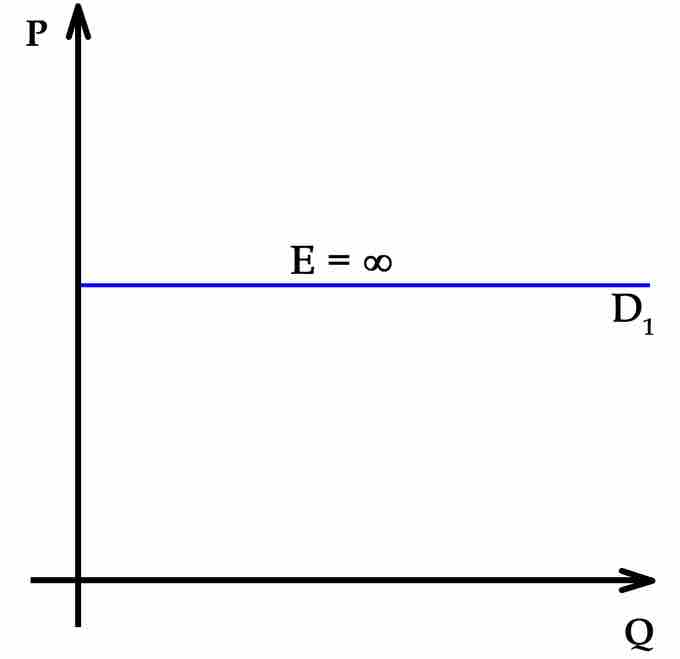Perfect competition and monopolistic competition are two types of economic markets.
Similarities
One of the key similarities that perfectly competitive and monopolistically competitive markets share is elasticity of demand in the long-run. In both circumstances, the consumers are sensitive to price; if price goes up, demand for that product decreases. The two only differ in degree. Firm's individual demand curves in perfectly competitive markets are perfectly elastic, which means that an incremental increase in price will cause demand for a product to vanish ). Demand curves in monopolistic competition are not perfectly elastic: due to the market power that firms have, they are able to raise prices without losing all of their customers.

Demand curve in a perfectly competitive market
This is the demand curve in a perfectly competitive market. Note how any increase in price would wipe out demand.
Also, in both sets of circumstances the suppliers cannot make a profit in the long-run. Ultimately, firms in both markets will only be able to break even by selling their goods and services.
Both markets are composed of firms seeking to maximize their profits. In both of these markets, profit maximization occurs when a firm produces goods to such a level so that its marginal costs of production equals its marginal revenues.
Differences
One key difference between these two set of economic circumstances is efficiency. A perfectly competitive market is perfectly efficient. This means that the price is Pareto optimal, which means that any shift in the price would benefit one party at the expense of the other. The overall economic surplus, which is the sum of the producer and consumer surpluses, is maximized. The suppliers cannot influence the price of the good or service in question; the market dictates the price. The price of the good or service in a perfectly competitive market is equal to the marginal costs of manufacturing that good or service.
In a monopolistically competitive market the price is higher than the marginal cost of producing the good or service and the suppliers can influence the price, granting them market power. This decreases the consumer surplus, and by extension the market's economic surplus, and creates deadweight loss.
Another key difference between the two is product differentiation. In a perfectly competitive market products are perfect substitutes for each other. But in monopolistically competitive markets the products are highly differentiated. In fact, firms work hard to emphasize the non-price related differences between their products and their competitors'.
A final difference involves barriers to entry and exit. Perfectly competitive markets have no barriers to entry and exit; a firm can freely enter or leave an industry based on its perception of the market's profitability. In a monopolistic competitive market there are few barriers to entry and exit, but still more than in a perfectly competitive market.